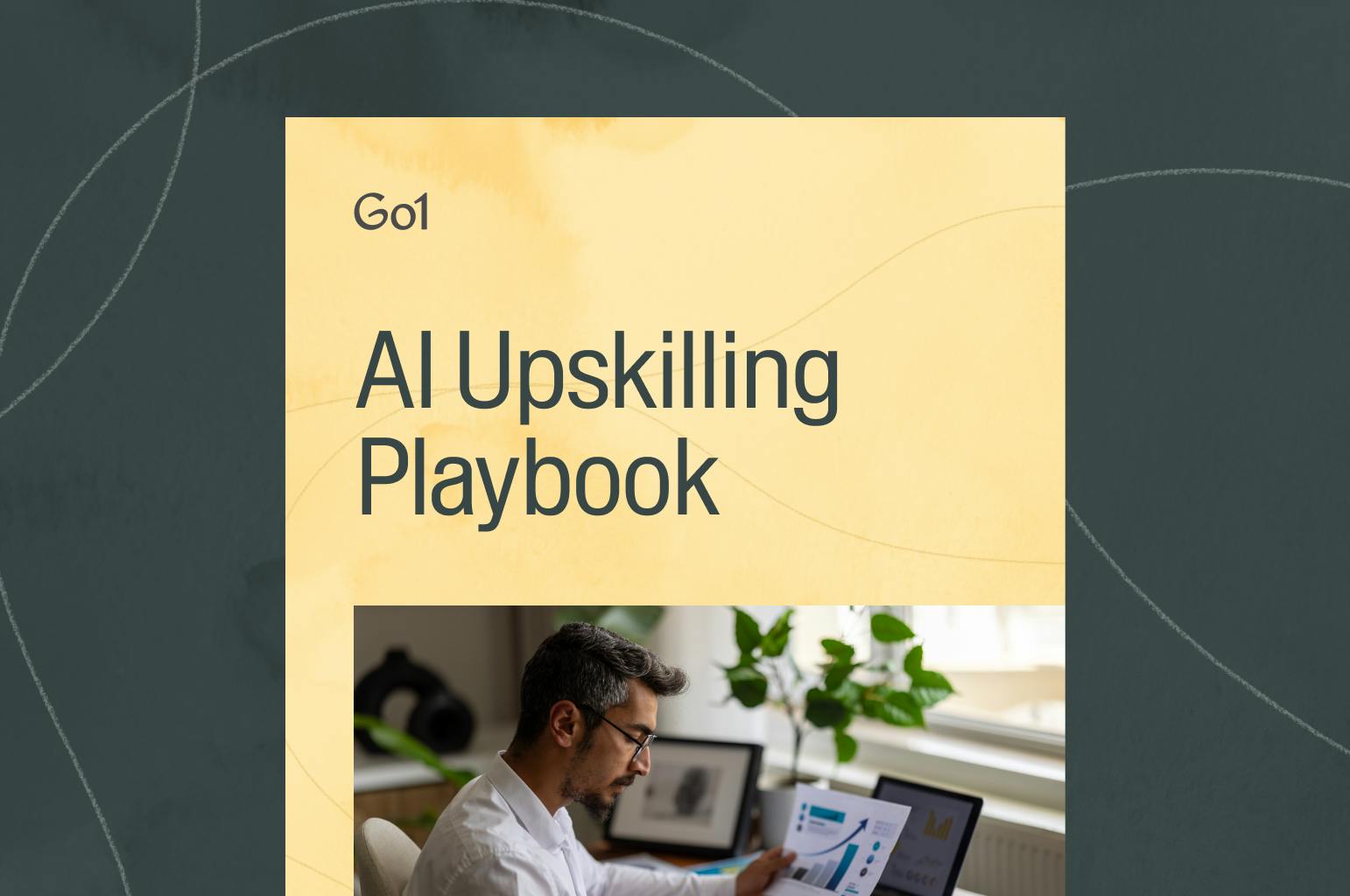Encourage skill transfer and engagement with personalized training

Identifying performance and skill gaps
After completing a learning needs analysis, you should have a clear idea of the major performance and skill gaps in your organization. If you’re still unsure, there are other steps you can take. According to our research, these are the most common ways teams determine which online learning skills to focus on:
- Work with managers to identify job-role-specific skills (62%)
- Gather feedback from employee surveys (56%)
- Conduct a skills gap analysis (50%)
- Map skills to our business objectives (46%)
- Have a skills competency framework (45%)

Using any of these methods—or multiple in conjunction—is a reliable way to identify performance and skill gaps. Remember, performance gaps generally indicate poor skill transfer from training to the job. Currently, just 12% of employees transfer skills from training to the job. In other words, the skills employees learn via training aren’t being applied in their day-to-day roles, leading to performance gaps. By focusing on resolving these performance gaps rather than merely assessing skill proficiency, your team can align training efforts with strategic business objectives and desired outcomes.
With the rise of AI and the shrinking shelf-life of skills, being aware of your employees’ skill and performance gaps is vital. Gartner finds that just 41% of employees are currently performing optimally—that is, consistently giving their best work in a way they're confident they can sustain over the next year. Similarly, 87% of organizations "know they have a skills gap or will have one within the next few years." These are concerning figures that organizations should aim to address urgently.

Generic vs targeted training
You’ve conducted a learning needs analysis and identified your organization’s skill and performance gaps. You’re almost there! Now, it’s time to tailor your training programs for optimal skill adoption and engagement. At this point, we’re hoping you’re not assuming a generic training program will suffice. While generic training is often the go-to for broad topics, it lacks the depth and relevance to engage learners effectively. In contrast, targeted training initiatives are customized to meet individual learners' specific needs and preferences.
For example, 93% of high-performing organizations agree that personalized learning supports employees in reaching professional goals more efficiently. And that’s just the tip of the iceberg. Employees are also up to 60% more engaged when presented with personalized courses rather than standardized training.
Whether through interactive modules, scenario-based simulations, or personalized learning paths, targeted training initiatives provide learners with meaningful and relevant learning experiences that drive tangible results.
Practical tips for personalized learning programs
To design a targeted training program, start by establishing clear learning objectives, KPIs, and success criteria that align with your organizational goals. For help with this step, check out our blog on setting employee engagement goals that lead to growth.
Next, leverage the data from your learning needs analysis to develop targeted content and learning pathways. When selecting learning content, you’ll want to incorporate a range of instructional strategies, multimedia resources, and interactive elements to cater to different learning preferences.
Additionally, you should provide opportunities for feedback, reflection, and reinforcement to support ongoing skill development and learn what is and isn’t working for your employees.
From here, there are several paths you could take to personalize your training program, depending on your team’s unique needs, circumstances, and goals. For instance, you may want to explore tools like Go1 AI, which can be a game-changer for real-time learning personalization. Similarly, you may want to explore the benefits of learning content aggregation.
Your ten-steps to design a targeted learning program

Ultimately, while the specific details will vary from business to business, we recommend following these ten steps to design personalized learning programs that encourage skill adoption and engagement:
1. Define clear objectives: Start by defining specific learning goals that align with your organizational objectives. These objectives will be your north star throughout this process.
2. Analyze learning needs: Gather insights on your organizational performance downfalls, skill gaps, and learning preferences via surveys, internal feedback, and a needs analysis.
3. Personalize content: Customize your training materials to suit individual learning preferences based on the insights gathered during your learning needs assessment.
4. Embrace technology: Utilize interactive tools, multimedia resources, and innovative technologies like AI to facilitate personalized, engaging learning experiences.
5. Encourage practice: Provide opportunities for learners to apply their new skills in practical scenarios to help them reinforce what they have learned. This is a vital step, as currently, just 12% of learners transfer skills from training to the job.
6. Provide regular feedback: Offer constructive feedback to employees to guide their progress and reinforce learning. Remember that feedback should be a two-way street, so ensure you’re open to any constructive employee feedback too!
7. Facilitate peer learning: Foster collaboration among employees by creating forums for sharing knowledge, advice, and experiences. Rather than completing static online courses, this style of learning is more hands-on and collaborative, encouraging higher engagement and skill transfer.
8. Offer on-demand learning: Provide access to training materials anytime, anywhere to accommodate different schedules and make your learning program attractive and accessible to the broadest possible audience.
9. Celebrate achievements: Recognize and celebrate learning milestones along the way to motivate employees and reinforce their commitment to learning.
10. Measure impact: Track and evaluate the success of your KPIs (established during step one) to assess the effectiveness of your training program. Then, make data-driven decisions to improve and iterate.
Learning made simple

Related Articles

Application Guide: How to use the Go1 AI for L&D Maturity Assessment to assess our workforce AI capability

AI upskilling made clear: A practical guide to building an AI-ready workforce

Go1 welcomes PepTalk

5 Data-Backed Insights Shaping the Future of AI in Workplace Learning

Train smarter, spend less
Train smarter,spend less
Connect with a Go1 expert to explore the best training options for your organization—no pressure, just solutions that work.